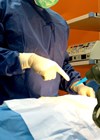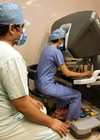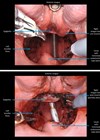ENT features archive for November 2021
Emerging robotic systems for head and neck surgery
As of December 2020, seven robotic surgical systems have received approval for use in different jurisdictions, and many more task-specific robots are in the pipeline. Jack Faulkner takes us through what’s on the horizon for head and neck cancer surgery....
Detecting cancer margins during robotic head and neck cancer surgery using ambient mass spectrometry
We have known about altered metabolism in cancer cells since Otto Warburg described it 97 years ago. But can we take advantage of this knowledge in curing cancer? Jim Higginson explains the value of smoke generated during cancer surgery. The...
Setting up a robotic surgical practice: view from India
Transoral robotic surgery has an established role in head and neck cancer surgery. But how easy is it to set up a service in a resource-constrained environment? Gouri Pantvaidya and Ameya Pai give us a view from the Indian subcontinent....
Robotic surgery for squamous cell cancer: the new frontiers
Although the da Vinci platform was FDA approved for early-stage oropharyngeal cancers, the indications have expanded. In this article, John Hardman explains how surgeons, with greater understanding of the strengths and limitations of robotic surgery, have systematically set out to...
Head and neck robotic surgery – considerations for the surgical trainee
In 2021, training in head and neck cancer surgery would be incomplete without some robotic resections under the belt. Henry Zhang explains how he did it and outlines the options available. With a wide range of applications in both benign...













